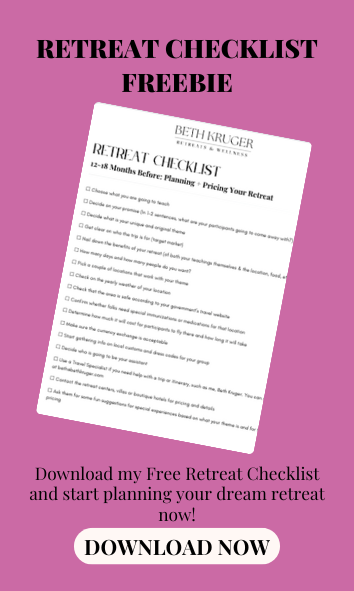Learn to Meditate in Three Simple Steps
There are about as many ways to teach meditation as there are specialty pizza toppings–and I have tried all of them over the 20 years I have been teaching and practicing yoga. Like pizza, we all have our favorite flavor combination, or sometimes we are in the mood for something a little different. Many meditation teachers also have strong opinions, similar to the way people feel about pineapple on their pizza. Yes, I know.
There is not really a “best way” to find stillness in your mind–there is really the way that is best for you. I often share that I am no guru–I am not THE MEDITATION EXPERT–for me it's a challenge to sit in silence and allow my mind to be still. Many times, I fail. My mind doesn’t like to be quiet. Neither does yours. This is why we need meditation. And this is a reason why we call it a practice, because we practice it–and over time it gets easier.
You are a grown up. You don’t need me to tell you why meditation is good for you. You know you should eat more kale, you know you should exercise daily, and you know you need to drink more water. Learning to find stillness in our ever chattering mind is just as important as all of these healthy lifestyle staples. Meditation can improve concentration and focus, reduce anxiety, help increase present moment awareness, improve sleep, lower stress levels, reduce depression, increase self esteem, increase your tolerance for pain, and help to fight addiction. It’s a worthwhile skill to cultivate even if it’s hard, and the rewards will be huge.
Here are three simple steps to follow to begin your meditation practice. Try doing this each day, and quickly log how you are feeling in a journal or your phone so you can track how it is affecting your day to day life. You can practice this seated, or lying down. Either works.
Eliminate Distractions
Put away the phone. Unless you are using it for your timer, which is the second step outlined below. If you must use your phone as a timer–turn it on airplane mode or hit the “Do Not Disturb” button. Put away the phone, close your computer, turn off the radio and the television. If you are able to find a space that you will not be interrupted in, GREAT! That could be the bathroom, the laundry room, a closet, your office–I know you can be creative. Time of day can also be a way to eliminate distraction. Some people choose to practice meditation in the morning or the evening for the simple reason that nobody else in the house is up and bothering them for things. Do your best to carve out a time and space where you will be able to set everything else aside.
Set a Timer
In the beginning, five minutes is a perfect length of time to start. Most of us can sit for five minutes, especially if you know that your timer is going off! Set a timer and stick to it. Slowly increase the time by one or two minutes weekly, and if you like, you can stop when you get to a 20 minute length of time. My teacher used to say 20 minutes is all you need each day. You don't need to meditate for 30 minutes or an hour to see benefits…and 20 minutes is a long time!! If that seems like a ridiculously long time–I get it!! It is a long time–start with 5 minutes and stick to that until you feel like its easy–and then increase the time. Conversely, if 5 minutes is agony–lower the timer to 2-3 minutes. Try to stick to this time frame for at least a week and then add one minute each week. A timer is your friend, and it's a great tool to use for this practice.
Follow Your Breath
Last step…easiest and hardest. Just follow the breath and use it as a focusing tool.
You can choose to use a visual, an auditory, or even a touch or tap to help you follow. Here is what I mean by that.
I am a visual person, so I like to attach a visualization to the breath–I imagine a ball of white (or purple or whatever color you love) light at the top of my head. As I breathe in, I move the ball down the spine into the pelvis. As I breathe out, I move the ball back up the spine to the top of the head. Easy-peasy, right?
As for the auditory–you can use a mantra to attach to the in breath and the out breath. You can pick something sanskrit like “so-hum” or “hum-sa” which are seed sounds and have meaning–or you can use a word in your language like “inhale calm, exhale peace” or whatever words have meaning and feel good for you to use.
The touch or tap can be something like sliding your hand up and down your leg, or back and forth on the floor or arm of your chair–or tapping and following it as you breathe in and out.
That is it. Sounds easy right?
What I have shared with you above is not complicated–but it is hard to do.
I completely understand the challenges that arise with this practice.
Try incorporating meditation for a week and see how it makes you feel. If you need and want more help meditating, I offer meditation videos in my online group for women over 40, and I can also work with you one on one to help to boost your own personal meditation practice.








